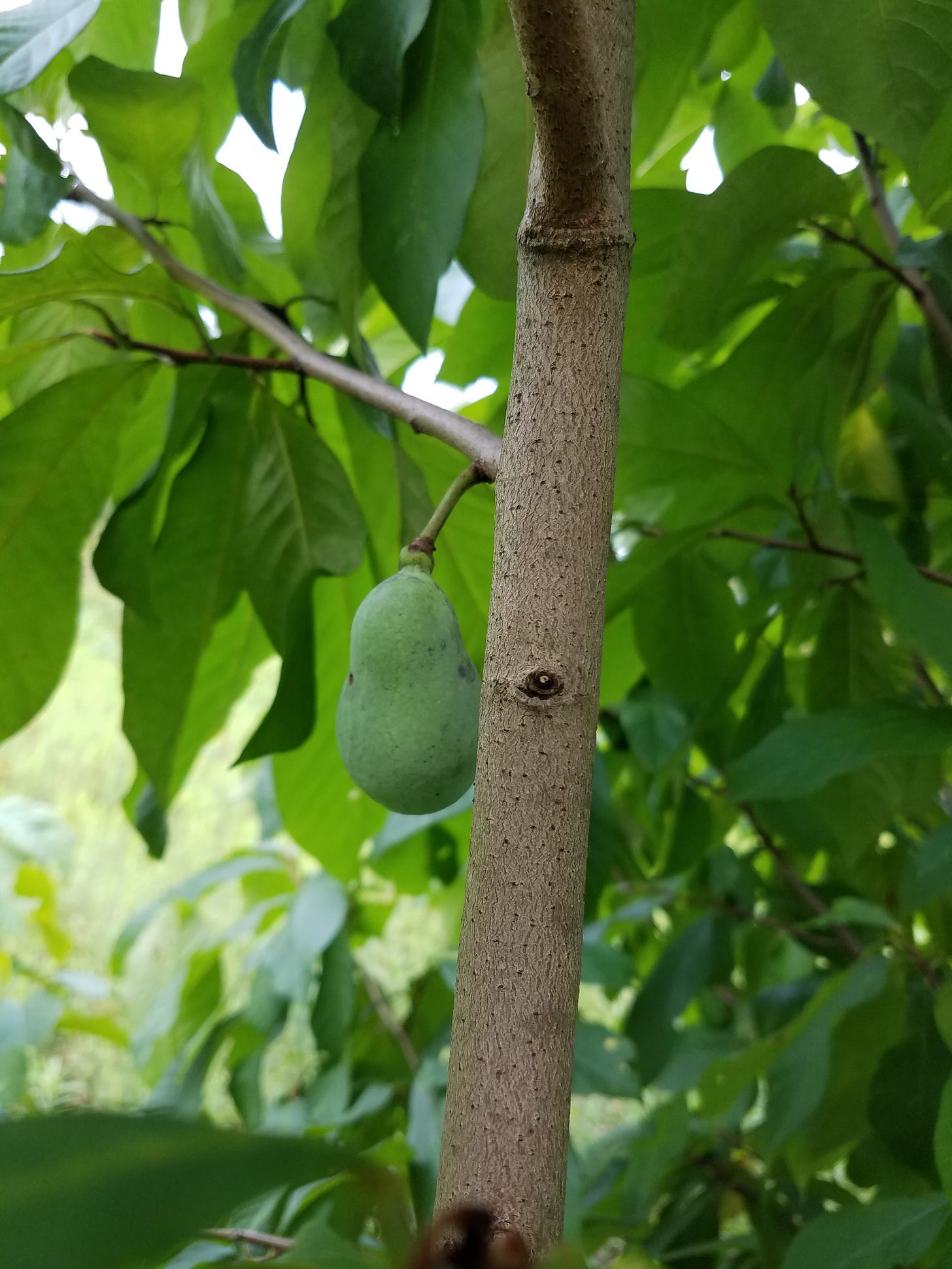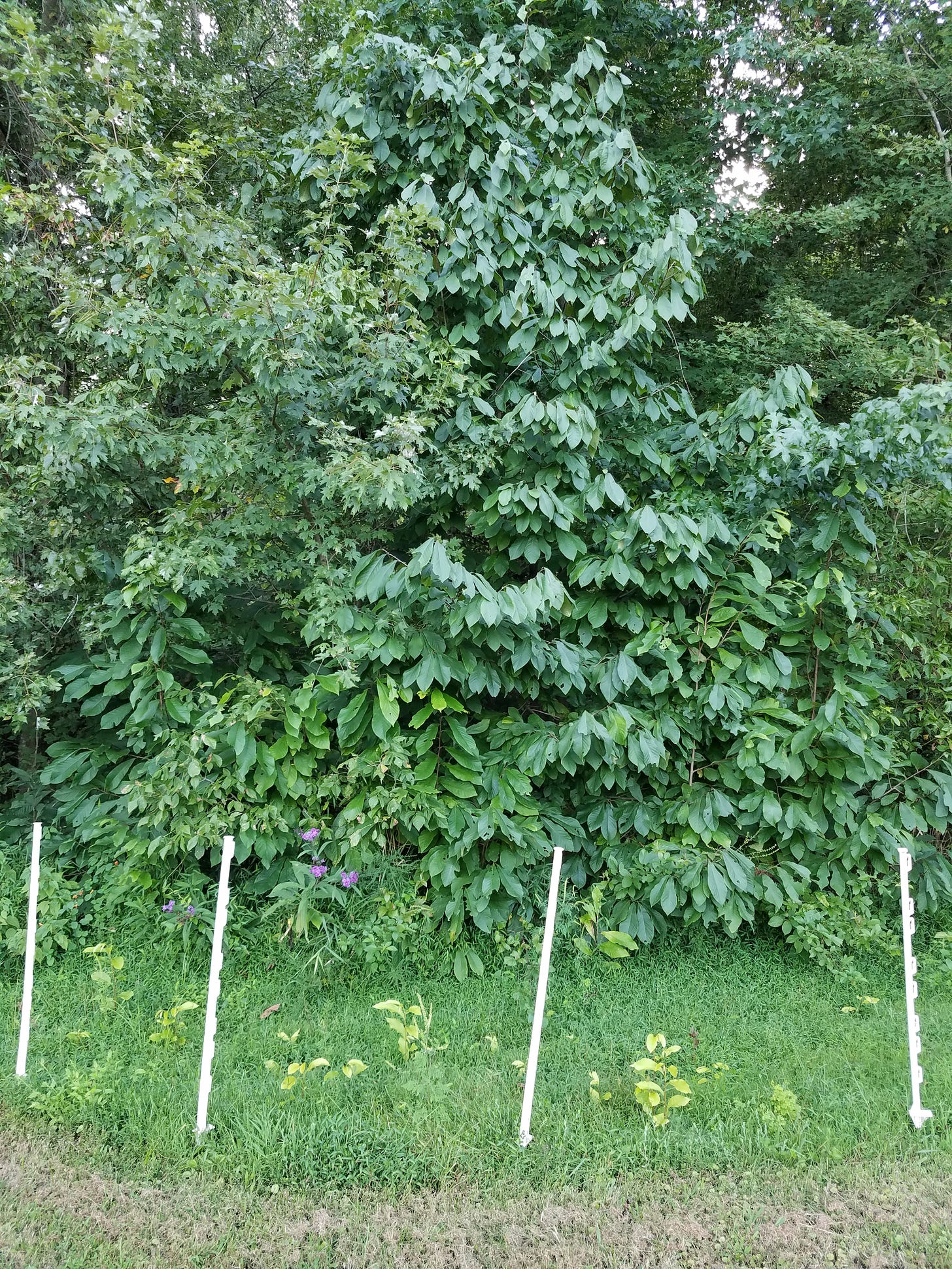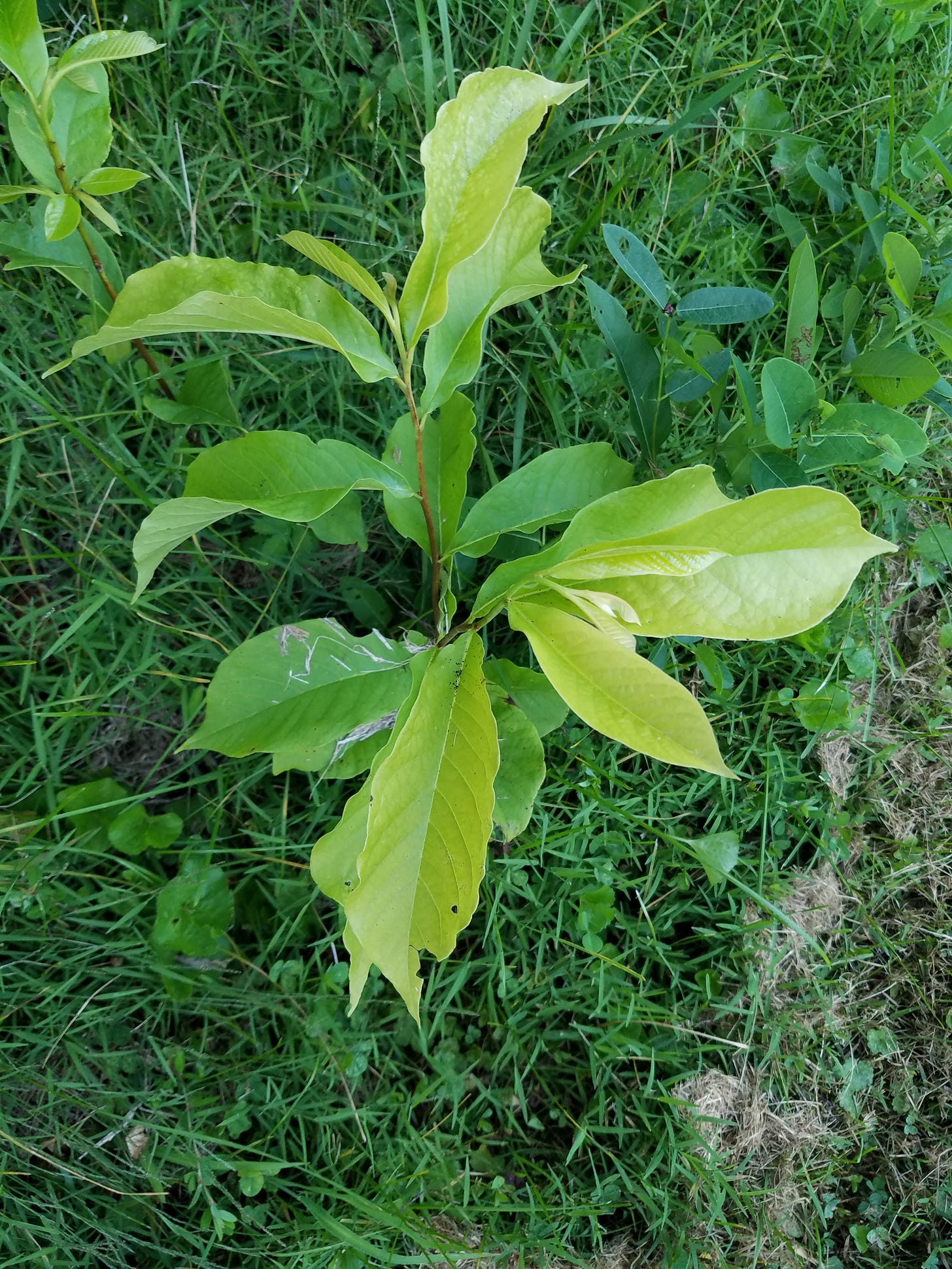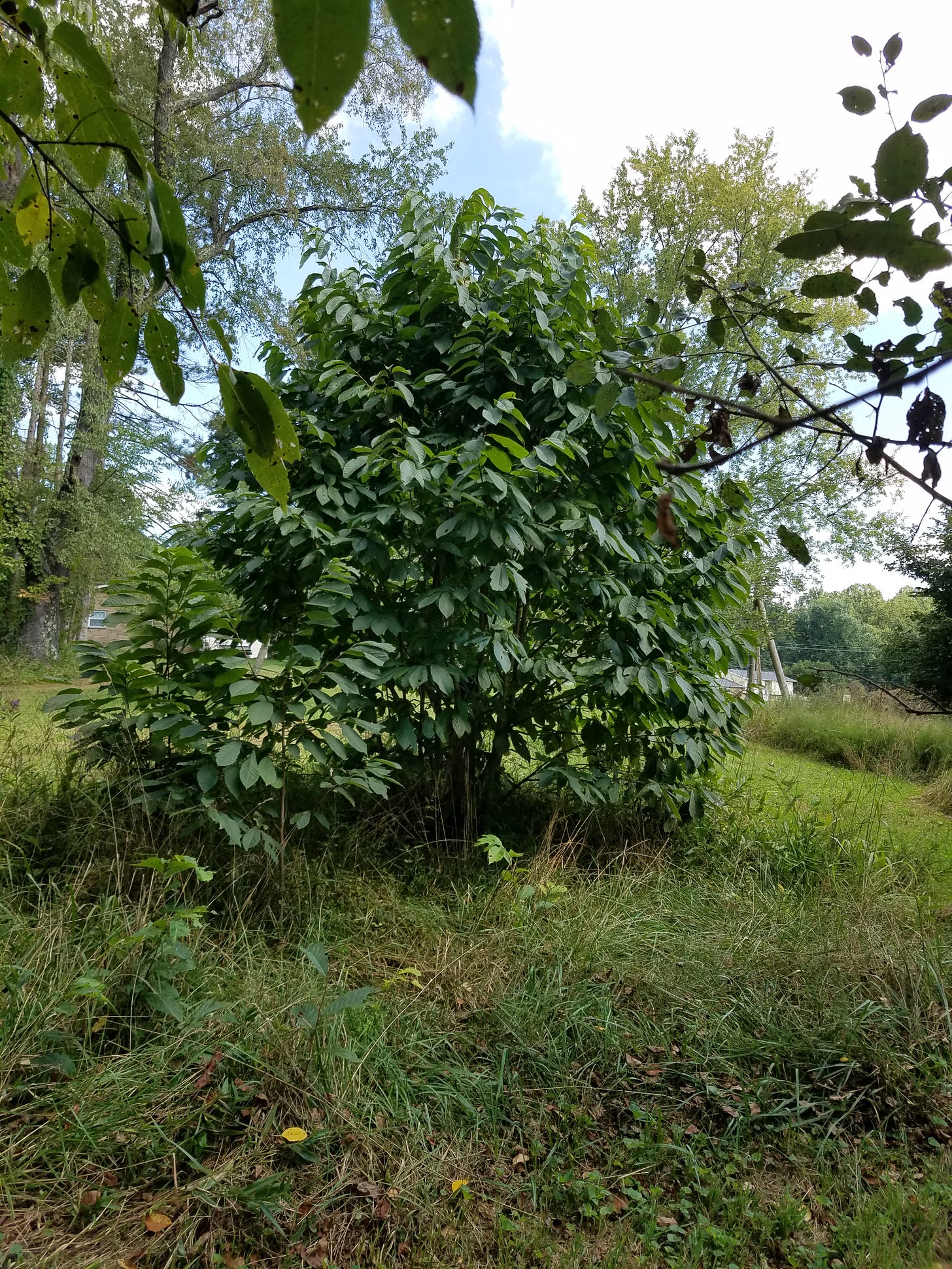Notes on the pawpaw
The many gifts of a humble tree from Appalachia
September is here and has brought with it cooler temperatures that beg to be taken advantage of. I try to spend as much time outside as I can. Longer, more thoughtful pieces of writing must go on the back burner while I engage in the pressing tasks of the season. One of the more pleasant jobs is walking the trails to check on the pawpaws that have been spreading across the farm.
I've written in the past about the demise of our ash trees due to the emerald ash borer, which opened up light-filled space in the woods. Pawpaw trees, poised to take over quickly thanks to their ability to spread by suckering, have done so. The silver lining of losing the ashes is an abundance of this native Appalachian tree, and in certain years, the banana-like fruit it produces.
Ten years ago I had no plans for growing pawpaws. I admired the tree for its tropical good looks, but it seemed that frosts nipped the flowers most years, resulting in a fruit here and there, never enough to count on. After the loss of the ashes, however, pawpaw shouldered in and presented itself as fast growing alternative, willing to fight it out with the invasive rose and honeysuckle that threatened to take over. Then last year the stars aligned and dozens of trees — those mature enough and receiving adequate sunlight — were loaded with clusters of poor man's bananas, as they are often called. Plans changed and encouraging pawpaw trees is now a priority. Luckily, by taking advantage of the clonal nature of the tree, I can allow it to propagate itself with little effort on my part.
My main tactic is to stop mowing around trees that are out in the open. Despite regular mowing, ambitious shoots were already springing up in these areas. The tree in the picture above was one such volunteer, recognized and marked with a stake to save it from the blades. That was approximately five years ago, and it has already reached a size capable of producing fruit and suckers. The large, light green leaves nestled in the Japanese stilt grass are the many offspring of this mother tree.
Young trees produced from root suckers rather than seeds grow very quickly because they receive sustenance from the mother tree that spawned them. Those who have read Suzanne Simard's Finding the Mother Tree or similar works on the subject, will be familiar with the term. Simard's mother trees are mature trees whose seeds sprout nearby and connect by way of underground fungal networks to the older tree. I'm using the term mother tree a little differently to refer to trees which send up root suckers. These suckers aren't actually offspring of the mother, they are the mother, that is, additional trees with the same genetics that share a root system. It's irresistible to use the terms mother and babies, however, because they resemble nothing more than a proud mama and her youngins.
There is a lot of interest in pawpaws these days, and cultivars have been developed that enhance the flavor, size and range of the tree. It's wonderful that the pawpaw is getting the respect and attention it deserves, but the tree also has much to offer those who don't want a formal orchard with purchased named varieties. One wild tree in the proper spot can grow to cover a large area, and be a low-cost basis for a food forest. In addition, they offer quick and easy shade and erosion control. Based on their extensive presence in the Savanna, they have great potential as a pioneer species to heal damaged land and jump-start forest growth.
The sprawling patches of pawpaws on the farm are the result of observation followed mainly by non-interference. By leaving certain areas unmowed I can help move things along. I also spend some time each winter removing strangling vines and underbrush, and limbing up nearby trees of other species. That's really all it takes. Perhaps the fruit of this tree should also be known as lazy woman's banana. In the future expect updates with lots of photos as I document the continuing progress of the pawpaw empire.







Pawpaws are excellent!